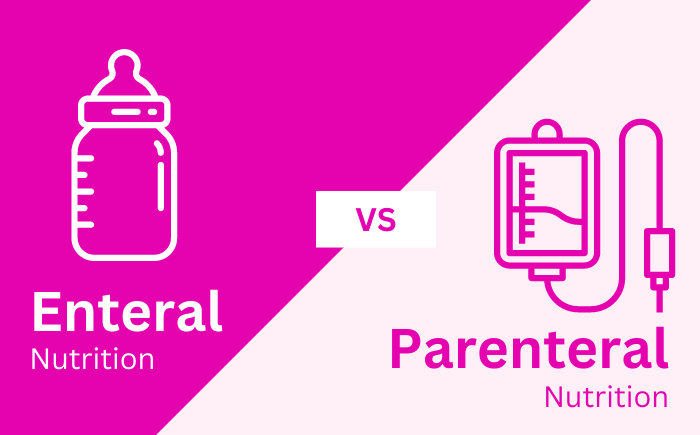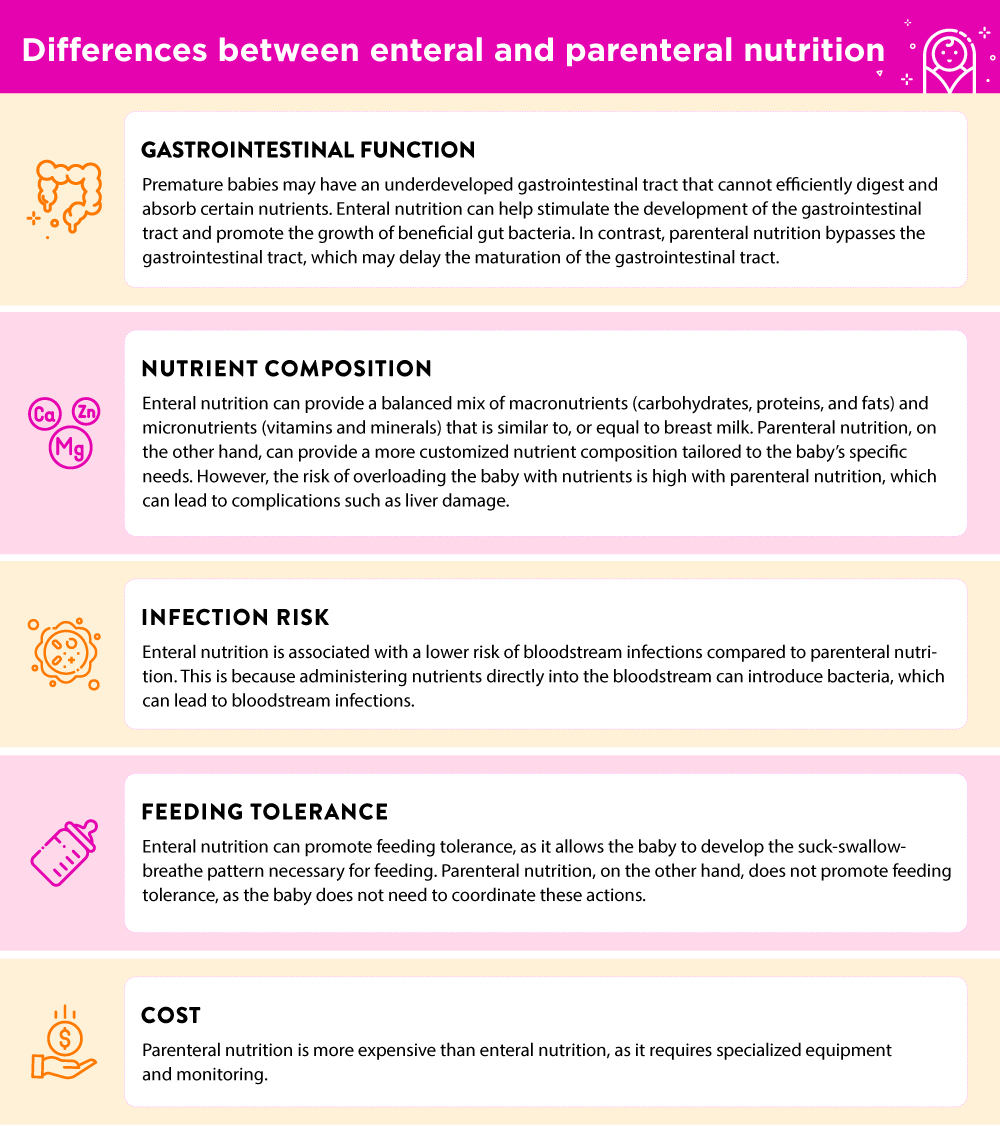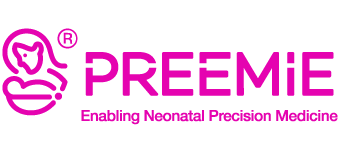Enteral vs parenteral nutrition

Premature babies are born before the completion of 37 weeks of gestation. These babies are at a high risk of developing nutritional deficiencies, which can have long-term consequences on their growth and development. Nutritional support is, therefore, essential for these babies, and there are two main routes of administering nutrients to premature babies: enteral and parenteral nutrition.
Enteral nutrition involves administering nutrients directly into the baby’s gastrointestinal tract, either through oral or nasal feeding. On the other hand, parenteral nutrition involves administering nutrients directly into the baby’s bloodstream through an intravenous line.
As enteral nutrition involves delivering nutrients directly into the gastrointestinal tract, this method is usually used when premature babies have a gastrointestinal tract that is functional and can absorb nutrients. On the other hand, when some infants are born very premature and their gastrointestinal tract is not developed enough, neonatal professionals choose the parenteral feeding method, while the gastrointestinal tract is not functioning properly.
There are several differences between enteral and parenteral nutrition, and each method has its advantages and disadvantages.

In conclusion, both enteral and parenteral nutrition have their advantages and disadvantages when it comes to feeding premature babies. Enteral nutrition is generally preferred over parenteral nutrition because it promotes gastrointestinal development and feeding tolerance while reducing the risk of infections by building a healthy microbiome. However, parenteral nutrition may be necessary in cases where enteral nutrition is not tolerated or when a more customized nutrient composition is required. The choice of feeding method should be made based on the individual baby’s needs and medical condition, with close monitoring and management by healthcare professionals.

